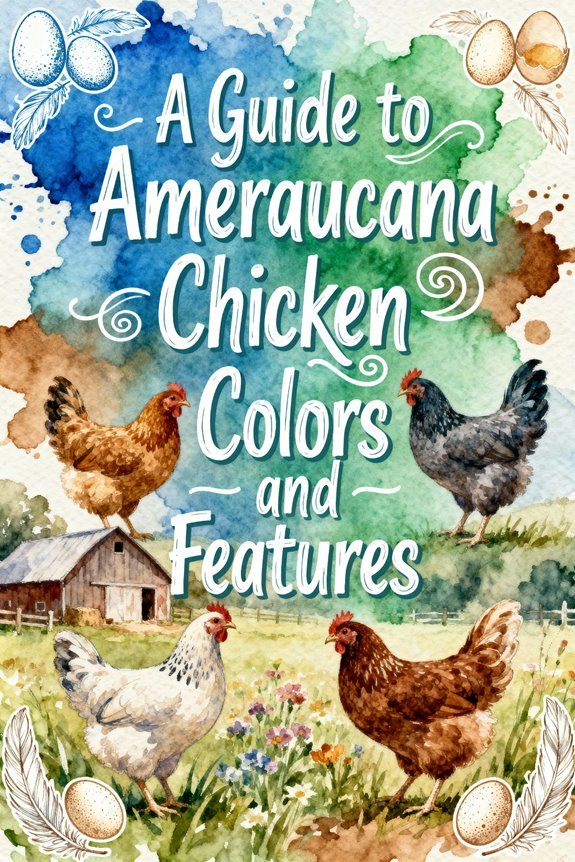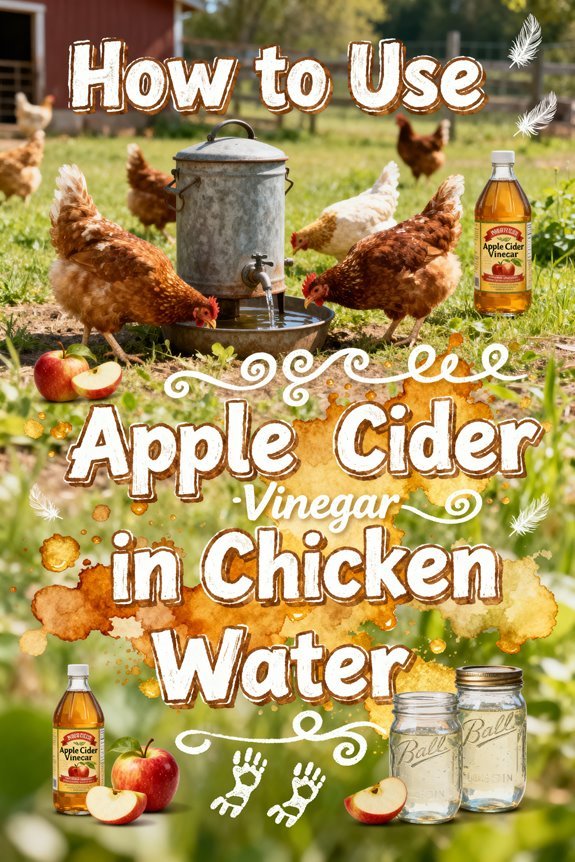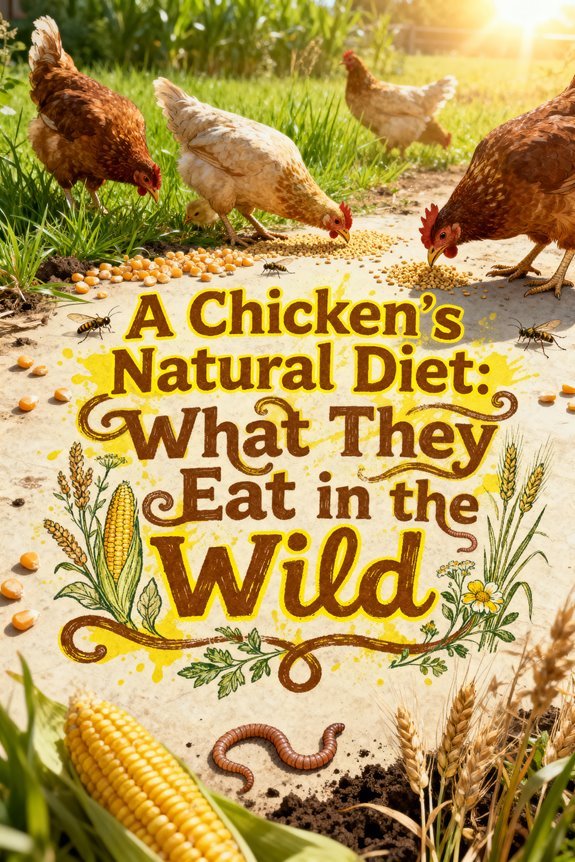A Complete Guide to Popular Chicken Breeds for Your Farm
You’ll find Leghorns leading egg production at 320 white eggs annually, while dual-purpose breeds like Rhode Island Reds offer both meat and 300 brown eggs yearly. For cold climates, choose hardy Ameraucanas or Black Australorps, maintaining 275+ eggs through winter. Beginners should consider gentle Buff Orpingtons, producing 250+ eggs with docile temperaments. Your breed selection impacts everything from housing requirements to feeding programs, with each variety bringing unique attributes to your farm’s success.
Best Egg-Laying Breeds for Maximum Production
Three standout breeds dominate the commercial egg-laying industry, with Leghorns leading production at up to 320 large white eggs annually. Austra Whites and California Whites follow closely, with the latter sometimes surpassing Leghorn output through hybrid advantages. These breeds excel in feed efficiency due to their smaller body mass.
For brown egg production, Red Sex Link hybrids deliver impressive yields of up to 300 extra-large eggs per year. While egg color preferences vary by market, both Calico Princess and Rhode Island Reds consistently produce 290+ brown eggs annually. Rhode Island Reds begin their egg laying cycle at 18-20 weeks of age. Modern hybrids offer superior laying capacity compared to heritage breeds, though they may face increased health risks like reproductive cancers. The Easter Egger breed stands out by producing blue and green eggs in extra-large sizes. The Plymouth Rock breed consistently delivers around 200 eggs yearly while maintaining excellent dual-purpose characteristics. Your production goals and market demands should guide breed selection, considering factors like egg size, shell color, and bird temperament.
Dual-Purpose Breeds for Eggs and Meat
Dual-purpose chicken breeds offer a strategic balance between meat yield and egg production, though they don’t match the specialized performance of dedicated meat or laying breeds. When selecting dual-purpose breeds, you’ll find excellent options in the Delaware, Rhode Island Red, Plymouth Rock, and Sussex varieties, each demonstrating reliable breeding practices and meat quality. Once these birds reach laying age, transitioning them to a high calcium diet ensures strong eggshell development.
These breeds reach butchering weight between 16-20 weeks, with mature weights ranging from 6-8 pounds. You can expect consistent egg production, with most breeds laying 200-300 brown eggs annually. The Rhode Island Red stands out with up to 300 eggs yearly, while the Delaware produces 4-5 large eggs weekly. Rhode Island Reds are particularly prized for their classic brown eggs that maintain consistent coloring throughout the year. Their calm temperaments and adaptability to various climates make them particularly suitable for small-scale farms and homesteads seeking self-sufficiency. While some breeds require more feed to maintain, the option to supplement with table scraps helps manage overall costs.
Cold-Hardy Breeds for Northern Climates
When selecting chickens for northern regions, cold-hardy breeds offer distinct anatomical advantages that assure survival and productivity through harsh winters. Their cold climate adaptations include smaller combs and wattles, which greatly reduce frostbite risk. You’ll find excellent winter layers like Ameraucanas and Black Australorps maintain production even in frigid conditions, laying 275+ eggs annually. Consider installing a supplemental heat source when temperatures drop below 35°F to maintain optimal egg production levels. Young chicks require draft-free brooder conditions with consistent warmth before moving outdoors.
The Barred Plymouth Rock breed is especially prized by northern farmers for its exceptional winter hardiness. For ideal frostbite prevention, choose breeds with dense feathering and substantial body mass. Buff Orpingtons and Brahmas excel with their heavy plumage and feathered feet, while Rhode Island Reds demonstrate remarkable cold tolerance. You’ll need to maintain draft-free coops with proper ventilation and apply protective ointments to exposed skin during extreme weather. These breeds, coupled with appropriate winter management practices, guarantee consistent egg production throughout the cold season.
Beginner-Friendly Breeds for Backyard Flocks
Selecting the right chicken breeds can greatly impact a novice keeper’s success with backyard flocks. Among easy care breeds, Orpingtons stand out with their adaptable nature, thriving in both hot and cold climates while requiring minimal foraging space. They’ll provide you with 250+ light brown eggs annually. The Sapphire Gem offers reliable egg production with 290-320 brown eggs yearly. The Wyandotte chicken breed comes in various attractive colors and produces around 200 eggs per year. The Buff Plymouth Rock chicken is an excellent choice with its gentle temperament and consistent laying of medium-sized tan eggs.
Asian Blacks and Smoky Pearls are excellent starter choices, both producing 250-300 eggs yearly and displaying friendly dispositions. You’ll find Asian Blacks particularly tolerant of handling, while Smoky Pearls maintain a calm demeanor in the flock hierarchy. For consistent layers, consider ISA Browns, which maintain production through winter without broody tendencies. Australorps and Speckled Sussex offer docile personalities perfect for families, though Sussex’s chattier nature requires consideration in urban settings. All these breeds combine manageable temperaments with reliable egg production, essential traits for beginning chicken keepers.
Understanding Chicken Behavior and Temperament
Understanding your chickens’ behavioral patterns requires familiarity with three primary temperament categories: bustle, aggression, and timidity. Through temperament assessment, you’ll notice that bustle manifests in activity levels and vocalization, while aggression shows through biting and hostile actions. Timidity appears as startled responses and avoidance behaviors. Proper diet choices can positively influence chicken temperament and reduce aggressive tendencies.
When selecting breeds, consider that Silkies typically display docile temperaments, while Leghorns exhibit more flighty tendencies. Early frequent chick handling can significantly improve a chicken’s comfort level with humans. You’ll find roosters generally show higher aggression than hens across all breeds. For mixed flocks, avoid combining aggressive breeds with docile ones to prevent bullying. Buff Orpingtons are excellent starter chickens due to their calm and friendly nature. Principal component analysis reveals that bustle and aggression account for the most significant behavioral variance between breeds. In free-range settings, nervous breeds need additional space and enrichment to maintain ideal welfare.
Physical Characteristics and Breed Recognition
Physical characteristics serve as defining markers for breed identification, encompassing five primary categories: plumage patterns, leg features, comb structures, facial attributes, and overall body composition. You’ll notice distinctive plumage variations across breeds, from Ancona’s V-shaped white tips on black feathers to Rhode Island Red’s deep red coloring. Leg features range from Brahma’s feathered legs to Houdan’s unique five-toed feet. Comb structures vary considerably, with Andalusian’s large pointed combs and Houdan’s V-shaped variants. Facial characteristics include Andalusian’s red wattles with white earlobes and Spanish White-Faced Black’s distinctive white face. These physical traits combine to create unmistakable breed profiles, enabling you to accurately identify different chicken breeds while maintaining your flock’s genetic integrity. The earlobes’ four colors help determine what color eggs a chicken will lay. Breeds like Ameraucana chickens produce distinctive blue eggs due to the oocyanin pigment deposited during shell formation. The Australorp breed holds impressive records with their ability to lay up to 364 eggs annually.
Egg Production Rates and Quality Comparison
When evaluating chicken breeds for your farm, egg production rates emerge as a critical metric, varying greatly across breed categories. High-production breeds like Leghorns lead the pack, delivering 250-320 eggs annually with consistent shell quality and medium to extra-large egg sizes. You’ll find dual-purpose breeds, such as Buff Orpingtons and Barnevelders, offering respectable yields of 150-280 eggs yearly, typically in brown shades. The Ameraucana chicken produces distinctive blue eggs while maintaining excellent production levels of 200-250 eggs per year. Heritage breeds and bantams produce fewer eggs, ranging from 80-160 annually, but often compensate with unique characteristics like colored shells or specialized market appeal. Consider your climate’s impact on production – Leghorns thrive in warmer conditions, while cold-hardy breeds maintain moderate output in winter months. The online breed chart helps buyers compare egg production rates across different chicken varieties. Most hens maintain peak egg production for their first two years before gradually decreasing output. Broodiness can greatly affect laying patterns, particularly in heritage breeds, requiring strategic management for ideal production.
Essential Care Tips for Different Breeds
Proper care management across chicken breeds demands tailored approaches to housing, nutrition, and environmental conditions. You’ll need to provide larger breeds like Buff Orpingtons with expanded coop space, while Bantams require less area. Implement breed-specific behavioral enrichment through appropriate perches and nesting boxes that match activity levels. Ensure adequate ventilation and perform monthly coop cleaning to maintain optimal health conditions. Consider breeds like Silver Laced Wyandottes for consistent winter egg production. Australorp chickens excel at foraging and require less supplemental feed.
Regular health monitoring should focus on breed-susceptible issues, with particular attention to high-producers and broody breeds. Adjust feeding programs based on breed size and purpose – layers need different nutrient ratios than meat birds. For ideal flock dynamics, maintain groups of 3-5 birds minimum, considering breed temperaments when mixing. Cold-hardy breeds like Rhode Island Reds need less winter protection, but all breeds require dry, weatherproof housing and continuous access to fresh water. Monitor for breed-specific stress indicators through behavioral observation.




